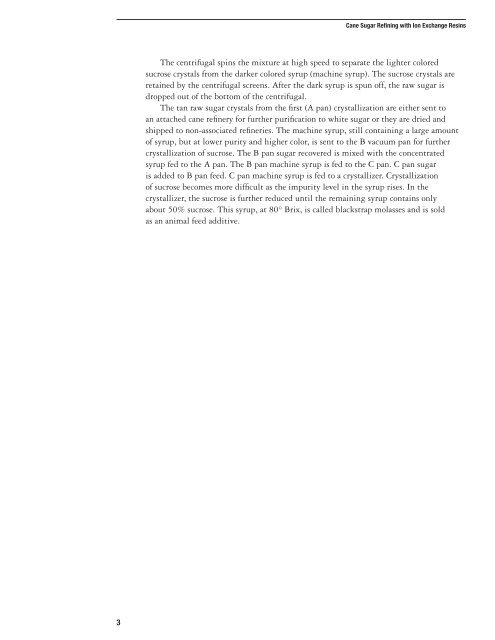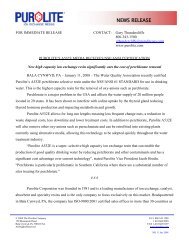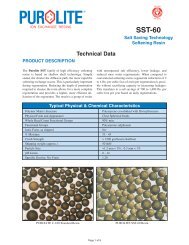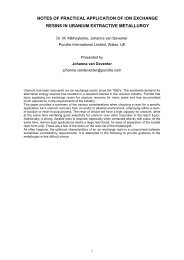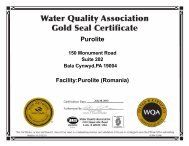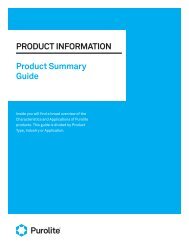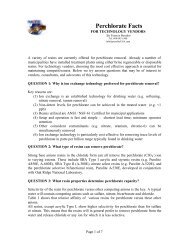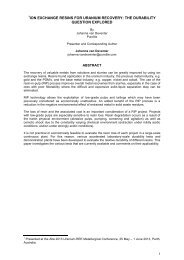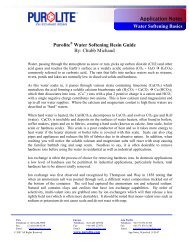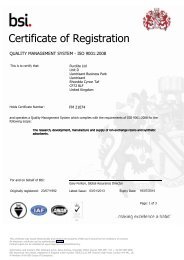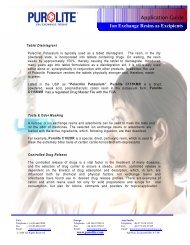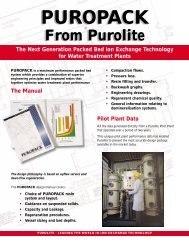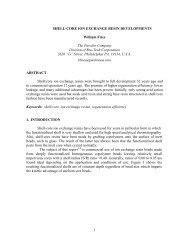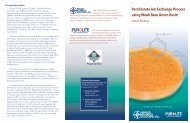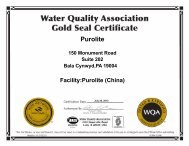Cane Sugar Refining - Purolite
Cane Sugar Refining - Purolite
Cane Sugar Refining - Purolite
Create successful ePaper yourself
Turn your PDF publications into a flip-book with our unique Google optimized e-Paper software.
3<br />
<strong>Cane</strong> <strong>Sugar</strong> <strong>Refining</strong> with Ion Exchange Resins<br />
The centrifugal spins the mixture at high speed to separate the lighter colored<br />
sucrose crystals from the darker colored syrup (machine syrup). The sucrose crystals are<br />
retained by the centrifugal screens. After the dark syrup is spun off, the raw sugar is<br />
dropped out of the bottom of the centrifugal.<br />
The tan raw sugar crystals from the first (A pan) crystallization are either sent to<br />
an attached cane refinery for further purification to white sugar or they are dried and<br />
shipped to non-associated refineries. The machine syrup, still containing a large amount<br />
of syrup, but at lower purity and higher color, is sent to the B vacuum pan for further<br />
crystallization of sucrose. The B pan sugar recovered is mixed with the concentrated<br />
syrup fed to the A pan. The B pan machine syrup is fed to the C pan. C pan sugar<br />
is added to B pan feed. C pan machine syrup is fed to a crystallizer. Crystallization<br />
of sucrose becomes more difficult as the impurity level in the syrup rises. In the<br />
crystallizer, the sucrose is further reduced until the remaining syrup contains only<br />
about 50% sucrose. This syrup, at 80° Brix, is called blackstrap molasses and is sold<br />
as an animal feed additive.


